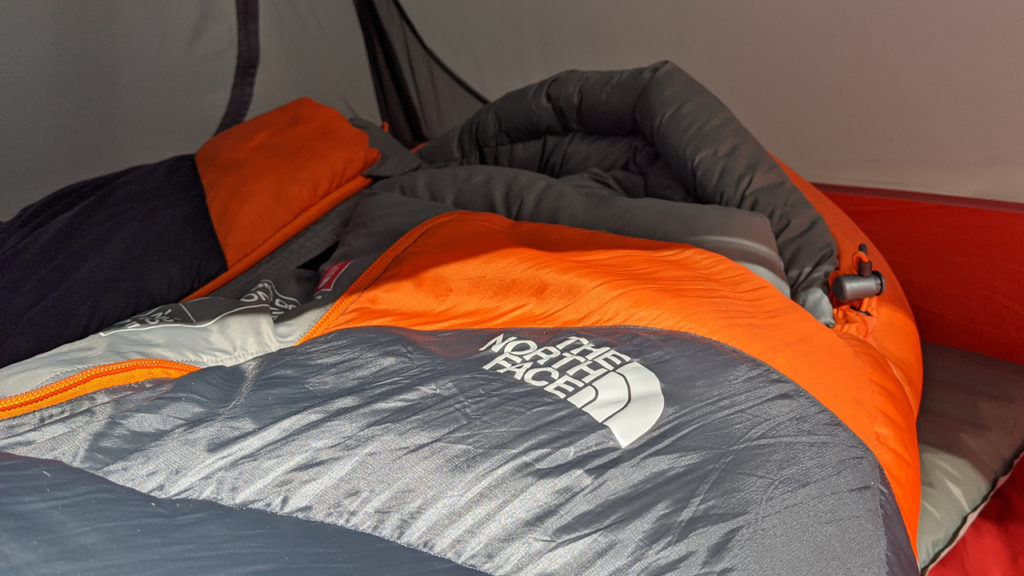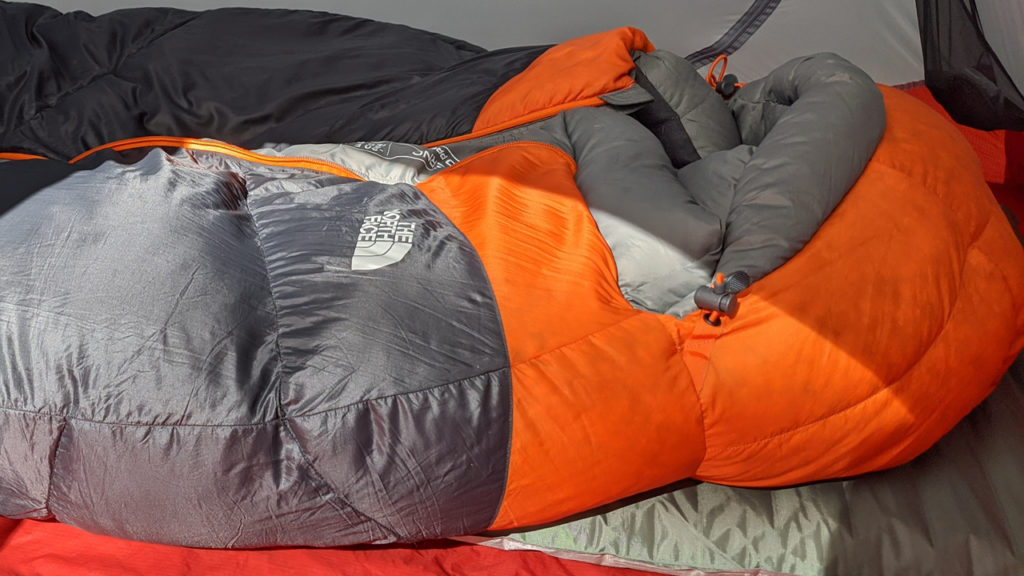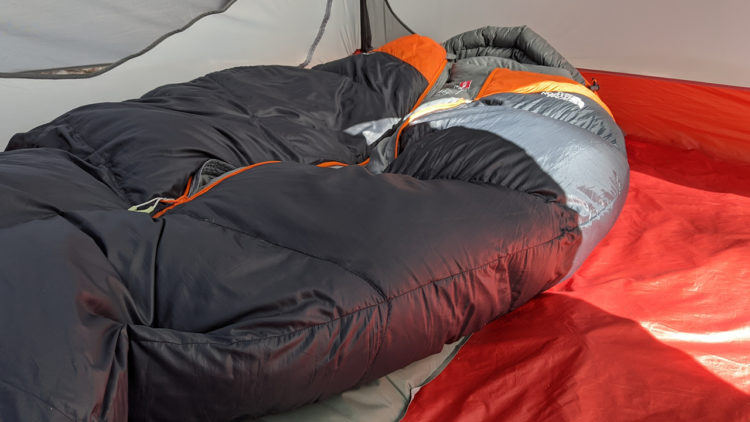I’ve had a North Face Inferno -20 sleeping bag for several years now, and it’s time I did review. I’m going to talk about why I like it, but first I’ll touch on a few things I think you should consider before you choose a winter bag.
What got me thinking about winter sleeping bags
I led an overnight backpacking trip recently with a Meetup group made up of folks with a very wide diversity of experiences ranging from seasoned section hikers to relative newbies. The weather forecast was cold, but not “seriously cold,” so a few participants just brought 3-season sleeping bags. Some realized they’d made a mistake when the temperature dipped close to freezing, but others were just fine. In the morning, as we huddled around the fire, there was a robust discussion about bag choice and how nobody seems to have the same needs. I learned some things, and some of the comments from the newbies made me realize there are a few misconceptions out there.
How do sleeping bag temperature ratings work?
I first got burned by sleeping bag temperature ratings decades ago when I bought a bag supposedly rated for 20 degrees and then spent a night shivering in my tent on a relatively mild 40-degree night. I came to understand that the 20-degree label was more of a survival rating and not necessarily a comfort rating.
Since I purchased that bag, there’s been some improvement in the way that sleeping bags are rated to try and achieve some consistency throughout the outdoor industry, but it’s not a perfect science. Instead of a single number, the new EN/ISO standard gives a range for “comfort,” “transition,” and “extreme.” I’m not going to get into the minutiae here. If you want a deeper dive, I like this explanation of sleeping bag ratings from the venerable outdoor brand Therm-A-Rest. The key thing to understand is the rating is a range that can be pretty wide. While there’s now more—and supposedly better—information, picking what’s right for you hinges on how what your body does when you sleep.
Are you a warm sleeper or a cold sleeper?
Two people in the same tent on the same night may have completely different personal experiences with exactly the same make and model of sleeping bag. One may be warm and the other shivering. There are lots of scientific explanations for why. Gender often plays a role, as can age, diet, and medications. Before you go shopping for sleeping bags, think about whether you’re a “warm sleeper” or a “cold sleeper.” Do you wake up cold while your partner next to you has thrown off all blankets because they’re hot? Personally, I’m a cold sleeper and need all the help I can get.
Down vs. synthetic sleeping bags
As a cold sleeper, I’m a big proponent of down sleeping bags in winter because I’ve had the best luck with them. Down is the soft wispy under plumage of birds—usually geese—and does a great job providing warmth vs. weight and packing size. It’s rated by “fill power.” The higher the fill power number, the better it traps heat. Synthetic bags are most often filled with polyester, and they’re usually cheaper, plus they retain more of their warmth when wet. If you want a deeper dive into the pros and cons of each material, check out this explanation of down vs. synthetic from REI.
North Face Inferno -20 review

Okay, now to the North Face Inferno -20 and why I like it. First off, be aware that North Face makes a range of bags under the Inferno name. There’s even a -40 model for when you decide to travel north of the Arctic circle. This is a review of the -20, and I’ve not used any of the other versions.
Also, North Face hasn’t begun applying the new EN/ISO temperature range standard to its sleeping bag descriptions. It simply gives this bag an old-school: “Temperature Rating:-20°F/ -29°C.”
Inferno is a great name, and more than a marketing gimmick, because I’ve never been cold in this bag even on 20-degree nights, which is about my limit for wanting to be out in the great outdoors.
The Inferno -20 is packed with 800 fill-power “ProDown,” which North Face says is goose down with a hydrophobic treatment to help it repel water and dry faster (one of the failings of traditional down fillings). North Face says it repels moisture ten times longer than untreated down.
The regular size bag (72 inches) weighs in at 3 lb 5 oz, and the long (79 inches) is four ounces heavier. When packed into its compression sack (included) it’s noticeably larger than my synthetic spring/fall bag, but not much heavier.
This is a traditional mummy-style bag, and I think the hood is fairly roomy. I like to sleep with a good-sized Therm-a-Rest Compressible Pillow and it fits in the hood with no problem. There’s an extra neck collar built into the bag to keep in the warm air. For me, the chest area of the bag is just okay in terms of size, but I’m very barrel-chested, so my needs are probably different from normal folks.

The Inferno -20 has a half-zip design, so you can’t open the bag completely and use it as a blanket. That means I really need to pay attention to the weather forecast and only bring this bag on cold-weather trips. Anything above 50 degrees is way too warm and I start to sweat in it. Even with a liner, this is too nice a bag to get funky in that way.
Really, my only gripe with the design is the zipper itself is small (similar to the size you’d find on a pair of jeans), and I find it snags easily compared to the larger zipper on my 3-season synthetic bag. I usually have to wiggle it up and down a couple of times in the morning to get it moving properly so I can unzip it all the way and get out.
Why I have three sleeping bags
Overall, I really love my North Face Inferno -20, but I only use it for cold weather. I live in the South, and if you’re as outdoorsy as I am, I’d argue you really need three bags: One for winter, one for milder spring and fall, and a very lightweight one that you can pull over yourself when it gets cooler late at night during the summer. There are endless choices in 3-season bags, and I have something similar to the REI Helio Sack for hot weather trips. If you’re a cold sleeper like me and camp in the winter, you can’t go wrong with the North Face Inferno -20.







